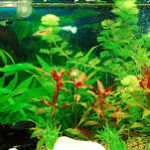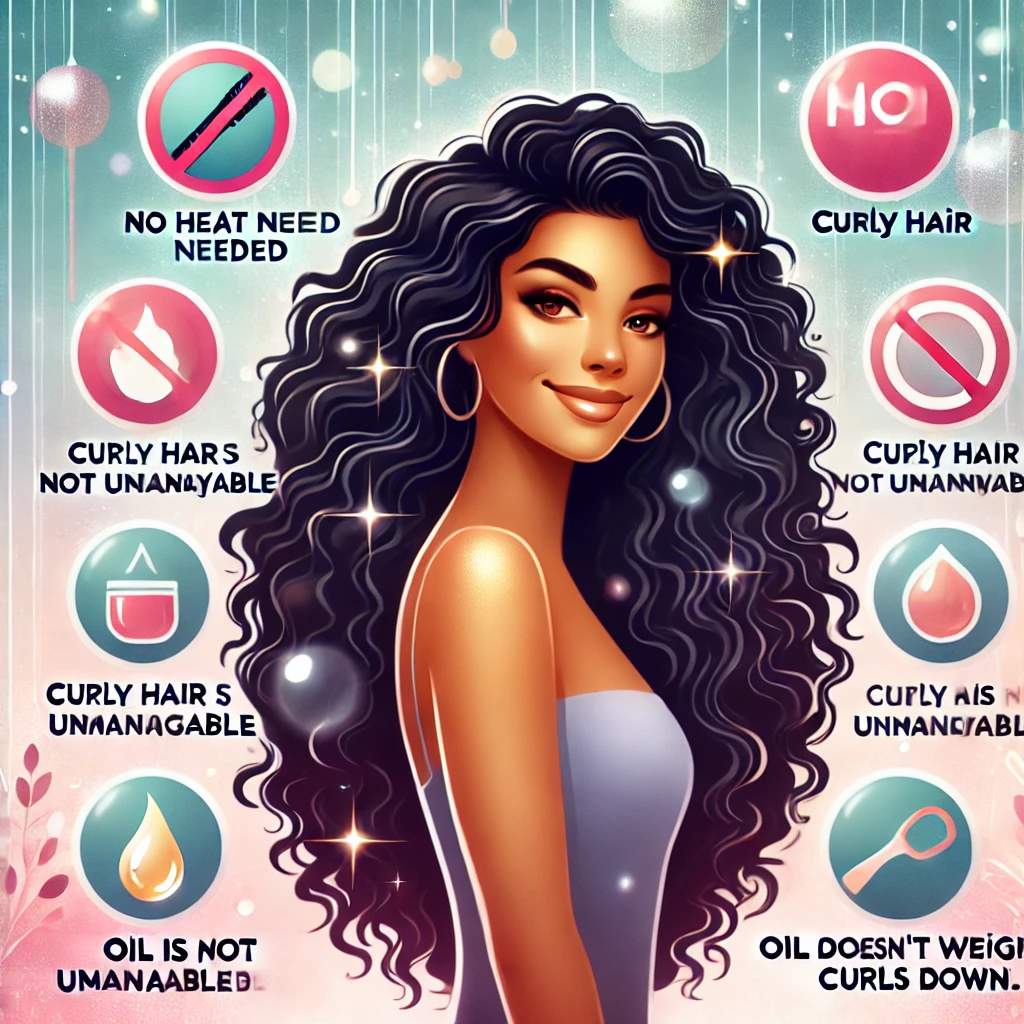Curly Hair Myths and the Truth Behind Them
Curly hair has always been a topic of fascination and frustration. For many, achieving long, gorgeous curls feels like an unattainable dream. The internet is flooded with advice, tips, and tricks, but not all of it is accurate. In fact, many of the so-called “truths” about curly hair care are nothing more than myths. These myths can lead to damaged hair, frustration, and even hair loss if followed blindly. This article aims to bust some of the most common curly hair myths and provide evidence-based advice on what actually works for maintaining healthy, beautiful curls.
Understanding Curly Hair Structure
Before diving into the myths, it’s essential to understand the structure of curly hair. Curly hair is fundamentally different from straight hair. Each strand of curly hair is oval or irregularly shaped, which causes it to bend and curl. This shape also makes curly hair more prone to dryness because the natural oils produced by the scalp have a harder time traveling down the hair shaft. Additionally, curly hair is more susceptible to damage because the bends and twists create weak points along the strand.
Myth 1: Curly Hair Should Be Washed Daily
One of the most pervasive myths about curly hair is that it needs to be washed every day. This belief likely stems from the idea that curly hair gets greasy quickly, but the opposite is true. Curly hair tends to be drier than straight hair, and washing it daily can strip away the natural oils that keep it moisturized. Over-washing can lead to dryness, frizz, and breakage.
The truth is that curly hair doesn’t need to be washed as frequently as straight hair. Most curly-haired individuals find that washing their hair two to three times a week is sufficient. On non-wash days, they can refresh their curls with a spray bottle of water and a leave-in conditioner. This approach helps maintain the hair’s natural moisture balance and prevents unnecessary damage.
Myth 2: Brushing Curly Hair Makes It Healthier
Another common myth is that brushing curly hair will make it healthier and more manageable. Many people believe that brushing distributes the natural oils from the scalp to the ends of the hair, keeping it moisturized. While this may be true for straight hair, brushing curly hair can actually cause more harm than good.
Curly hair is more fragile than straight hair, and brushing it can lead to breakage and frizz. Instead of using a brush, curly-haired individuals should use a wide-tooth comb or their fingers to detangle their hair. This method is gentler and helps preserve the hair’s natural curl pattern. Detangling should be done when the hair is wet and coated with conditioner to minimize damage.
Myth 3: Curly Hair Doesn’t Need Conditioner
Some people believe that curly hair doesn’t need conditioner because it’s already oily or because conditioner weighs it down. This myth couldn’t be further from the truth. As mentioned earlier, curly hair is naturally drier than straight hair, and it needs all the moisture it can get.
Conditioner is essential for keeping curly hair hydrated and manageable. It helps to smooth the hair cuticle, reduce frizz, and define curls. Without conditioner, curly hair can become dry, brittle, and prone to breakage. It’s important to choose a conditioner that’s specifically formulated for curly hair, as these products are designed to provide the extra moisture that curly hair needs.
Myth 4: Heat Styling Is the Only Way to Manage Curly Hair
Many people with curly hair feel that the only way to manage their curls is to use heat styling tools like flat irons and curling wands. While these tools can create beautiful styles, they can also cause significant damage to curly hair. Heat styling can strip away moisture, weaken the hair shaft, and lead to breakage.
The good news is that there are plenty of heat-free ways to style curly hair. Techniques like plopping, diffusing, and using curl-enhancing products can help define and enhance natural curls without the need for heat. Embracing natural curls and learning how to care for them properly can lead to healthier, more beautiful hair in the long run.
Debunking More Curly Hair Myths and Embracing Natural Curls
In the first part of this article, we explored some of the most common myths surrounding curly hair care. We learned that curly hair doesn’t need to be washed daily, brushing can cause damage, conditioner is essential, and heat styling isn’t the only way to manage curls. In this second part, we’ll continue to bust more myths and provide additional insights into how to care for curly hair properly.
Myth 5: Cutting Curly Hair Makes It Grow Faster
One of the most persistent myths about curly hair is that cutting it will make it grow faster. This belief likely stems from the idea that trimming the ends of the hair removes split ends, which can make the hair appear healthier. While it’s true that regular trims can help maintain the health of curly hair, they don’t actually affect the rate at which hair grows.
Hair growth occurs at the scalp, not at the ends. The rate of hair growth is determined by genetics, hormones, and overall health, not by how often the hair is cut. However, regular trims are still important for curly hair because they help prevent split ends from traveling up the hair shaft and causing further damage. By keeping the ends healthy, curly-haired individuals can maintain the length and appearance of their hair.
Myth 6: Curly Hair Should Be Combed When Dry
Another common myth is that curly hair should be combed when it’s dry. This belief likely comes from the idea that combing dry hair will help distribute natural oils and reduce frizz. However, combing curly hair when it’s dry can actually cause more harm than good.
Curly hair is more fragile when it’s dry, and combing it can lead to breakage and frizz. Instead, curly-haired individuals should comb their hair when it’s wet and coated with conditioner. This method is gentler and helps to detangle the hair without causing damage. Using a wide-tooth comb or fingers to detangle can also help preserve the hair’s natural curl pattern.
Myth 7: Curly Hair Doesn’t Need Protein
Some people believe that curly hair doesn’t need protein because it’s already strong and resilient. However, this is a misconception. While curly hair may appear strong, it’s actually more prone to damage due to its structure. Protein is essential for maintaining the strength and elasticity of curly hair.
Protein treatments can help repair damaged hair and prevent breakage. These treatments work by filling in the gaps in the hair shaft caused by damage, making the hair stronger and more resilient. However, it’s important to use protein treatments in moderation, as too much protein can make the hair feel stiff and brittle. Finding the right balance between moisture and protein is key to maintaining healthy curly hair.
Myth 8: Curly Hair Can’t Be Long
Many people believe that curly hair can’t grow long because it’s more prone to breakage. While it’s true that curly hair is more fragile than straight hair, it’s still possible to grow long, healthy curls with the right care.
The key to growing long curly hair is to minimize damage and maintain moisture. This means avoiding heat styling, using gentle hair care products, and protecting the hair from environmental damage. Regular trims, deep conditioning treatments, and protective styles can also help maintain the health of curly hair and promote growth. With the right care, curly-haired individuals can achieve the long, gorgeous curls they’ve always wanted.
More Curly Hair Myths and Advanced Care Tips
In the first two parts of this article, we’ve debunked several common myths about curly hair care. We’ve covered topics like washing frequency, brushing, conditioning, heat styling, cutting, combing, protein treatments, and growing long curls. In this third part, we’ll continue to explore more myths and provide advanced care tips for maintaining healthy, beautiful curls.
Myth 9: Curly Hair Should Be Cut the Same Way as Straight Hair
One of the most common misconceptions about curly hair is that it should be cut the same way as straight hair. This myth likely stems from the idea that all hair is the same and can be treated uniformly. However, curly hair requires a different approach when it comes to cutting.
Curly hair has a unique structure and behavior, and it needs to be cut in a way that enhances its natural curl pattern. A technique known as “curl-by-curl” cutting is often used by stylists who specialize in curly hair. This method involves cutting each curl individually to create a shape that works with the hair’s natural texture. A good curly hair cut can make a significant difference in how the curls look and behave, so it’s important to find a stylist who understands curly hair.
Myth 10: Curly Hair Should Be Washed with Sulfate-Free Shampoo Only
Another common myth is that curly hair should only be washed with sulfate-free shampoo. Sulfates are detergents that create lather and remove oil and dirt from the hair. While it’s true that sulfates can be drying, especially for curly hair, they’re not inherently bad.
The key is to find a shampoo that works for your specific hair type and needs. Some curly-haired individuals may find that sulfate-free shampoos work well for them, while others may prefer a gentle sulfate shampoo. The important thing is to choose a shampoo that cleanses the hair without stripping away too much moisture. It’s also important to follow up with a good conditioner to restore moisture and keep the hair hydrated.
Myth 11: Curly Hair Doesn’t Need Sun Protection
Many people believe that curly hair doesn’t need sun protection because it’s naturally thicker and more resilient. However, this is a dangerous misconception. Just like skin, hair can be damaged by the sun’s UV rays.
Prolonged sun exposure can cause curly hair to become dry, brittle, and faded. It can also weaken the hair shaft, leading to breakage. To protect curly hair from the sun, it’s important to use products that contain UV filters or wear a hat when spending time outdoors. Additionally, using leave-in conditioners and oils can help provide an extra layer of protection and keep the hair hydrated.
Myth 12: Curly Hair Should Be Styled with Heavy Products
Some people believe that curly hair needs heavy products to keep it under control. This myth likely comes from the idea that curly hair is unruly and difficult to manage. However, using heavy products can actually weigh down the hair and make it look greasy and lifeless.
The key to styling curly hair is to use lightweight products that enhance the natural curl pattern without weighing it down. Look for products that are specifically formulated for curly hair, such as curl creams, gels, and mousses. These products can help define curls, reduce frizz, and add shine without making the hair feel heavy or greasy.
Final Curly Hair Myths and Comprehensive Care Guide
In the previous parts of this article, we’ve debunked numerous myths about curly hair care and provided tips for maintaining healthy, beautiful curls. In this final part, we’ll tackle the last set of myths and offer a comprehensive guide to achieving and maintaining long, gorgeous curls.
Myth 13: Curly Hair Should Be Avoided During Pregnancy
Some people believe that curly hair should be avoided during pregnancy because hormonal changes can alter the hair’s texture. While it’s true that pregnancy can cause changes in hair texture, this doesn’t mean that curly hair should be avoided.
Pregnancy can actually be a great time to embrace natural curls. Hormonal changes can make hair thicker and more voluminous, which can enhance the appearance of curls. However, it’s important to continue with a good hair care routine to keep the hair healthy. This includes regular trims, deep conditioning treatments, and avoiding heat styling.
Myth 14: Curly Hair Should Be Washed with Cold Water
Another common myth is that curly hair should be washed with cold water to seal the cuticle and reduce frizz. While cold water can help seal the cuticle and add shine, it’s not necessary to wash curly hair with cold water exclusively.
The temperature of the water used to wash hair is a matter of personal preference. Some people find that cold water helps reduce frizz, while others prefer warm water for a more comfortable washing experience. The key is to avoid using water that’s too hot, as it can strip away moisture and cause dryness. After washing, a final rinse with cold water can help seal the cuticle and add shine.
Myth 15: Curly Hair Should Be Avoided in Humid Climates
Many people believe that curly hair should be avoided in humid climates because it will become frizzy and unmanageable. While it’s true that humidity can cause frizz, this doesn’t mean that curly hair can’t thrive in humid environments.
The key to managing curly hair in humid climates is to use the right products and techniques. Anti-humidity sprays, gels, and creams can help control frizz and keep curls defined. Additionally, protective styles like braids and buns can help keep the hair under control in humid weather. With the right care, curly hair can look beautiful in any climate.
Myth 16: Curly Hair Should Be Avoided as You Age
Some people believe that curly hair should be avoided as you age because it can make you look older. This myth likely stems from the idea that curly hair is more youthful and playful, while straight hair is more mature and sophisticated.
However, there’s no reason to avoid curly hair as you age. In fact, curly hair can be a great way to add volume and texture to thinning hair, which is common as people age. The key is to choose a style that complements your face shape and personal style. With the right cut and care, curly hair can look beautiful at any age.
Comprehensive Care Guide for Long, Gorgeous Curls
Now that we’ve debunked the myths, let’s put it all together with a comprehensive care guide for achieving and maintaining long, gorgeous curls.
- Wash Less Frequently: Curly hair doesn’t need to be washed daily. Aim for two to three times a week, and refresh curls with water and leave-in conditioner on non-wash days.
- Detangle Gently: Use a wide-tooth comb or your fingers to detangle curly hair when it’s wet and coated with conditioner. Avoid brushing dry hair to prevent breakage and frizz.
- Condition Regularly: Curly hair needs moisture, so use a conditioner formulated for curly hair every time you wash. Consider deep conditioning treatments weekly for extra hydration.
- Avoid Heat Styling: Embrace natural curls and avoid heat styling tools. Use heat-free techniques like plopping and diffusing to enhance curls.
- Get Regular Trims: Regular trims help prevent split ends and maintain the health of curly hair. Find a stylist who specializes in curly hair for the best results.
- Use Protein Treatments: Protein treatments can help repair damage and strengthen curly hair. Use them in moderation to avoid stiffness and brittleness.
- Protect from the Sun: Use products with UV filters or wear a hat to protect curly hair from sun damage. Keep the hair hydrated with leave-in conditioners and oils.
- Choose Lightweight Products: Use lightweight products like curl creams, gels, and mousses to define curls without weighing them down.
- Embrace Your Curls: Curly hair is beautiful at any age and in any climate. With the right care, you can achieve long, gorgeous curls that you’ll love.
In this final part of the article, we’ve debunked the last set of myths about curly hair care and provided a comprehensive guide to achieving and maintaining long, gorgeous curls. By following these tips and embracing your natural curls, you can enjoy healthy, beautiful hair that turns heads wherever you go. Remember, the key to great curls is understanding your hair’s unique needs and giving it the care it deserves.










